Prune Your Pear Tree When Dormant In Winter, It Helps Establish A Good Form
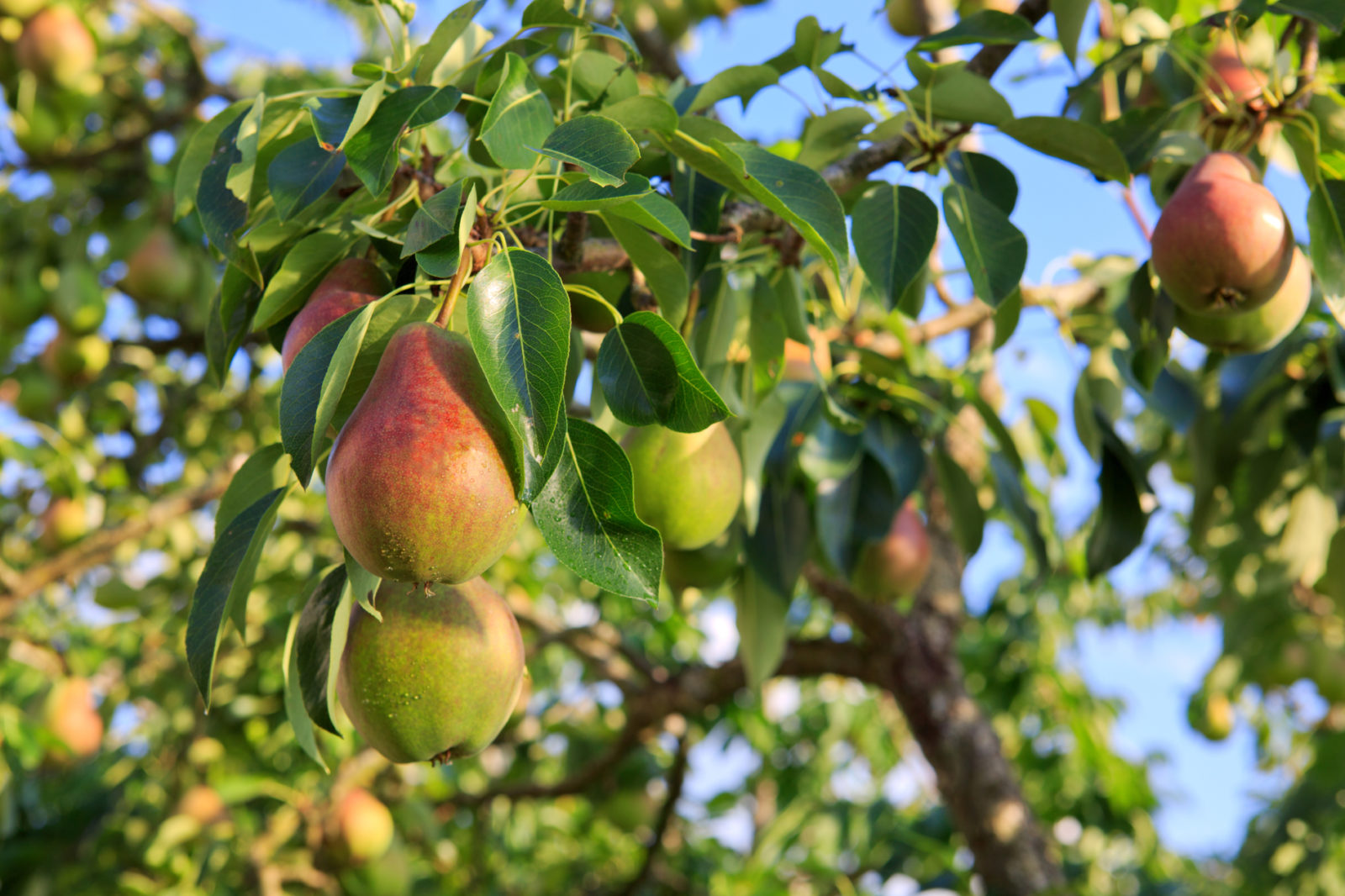

Elizabeth is a Permaculture Garden Designer, Sustainability Consultant and Professional Writer, working as an advocate for positive change. She graduated from the University of St. Andrews with an MA in English and Philosophy and obtained a Diploma in Applied Permaculture Design from the Permaculture Association.
Reviewed By DAN ORI

Dan has over 27 years’ under his belt caring for plants and gardens. Working as a Horticultural Instructor and Consultant, he draws on a diverse range of experience that includes working as a Head Gardener, Tree Surgeon, Garden Centre Trouble Shooter, and writer of academic papers. Dan has a Level 3 Diploma in Horticulture and is currently a candidate for the RHS’s most prestigious award – The Master of Horticulture.
IN THIS GUIDE
PEAR GUIDES
Pear trees are one of the fruit trees commonly grown in the UK that does require some pruning.
However, as you will discover below, there are a number of different strategies that you can adopt, and several different levels of pear tree pruning that you might consider.
Why Prune Pear Trees?
Which pruning you undertake for a pear tree will depend on the age and size of the pear tree in question and also what exactly you wish to achieve.
However, at least some pruning is important, because it will help to keep the pear tree in optimal health.
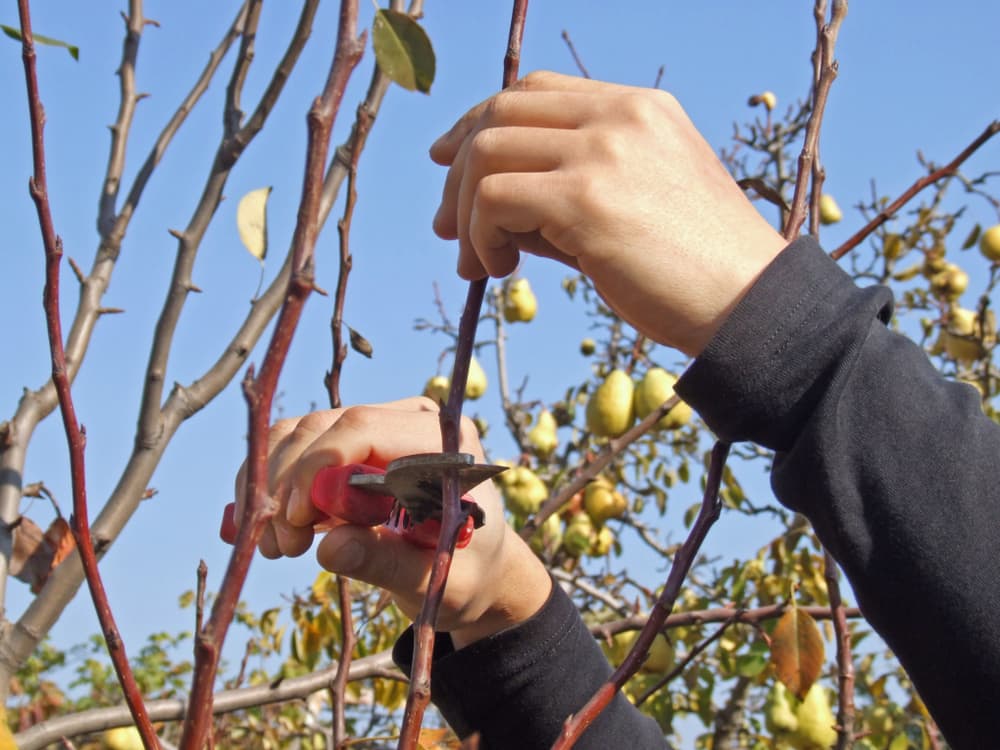
Pear trees are pruned in order to:
- Establish a good form and structure on newly planted trees.
- Maintain good health by getting rid of dead, damaged or diseased material.
- Regulate the size of the tree with general maintenance pruning.
- Maintain a particular shape and form.
- Renovate a large and overgrown pear tree.
When To Prune Pear Trees
Most pruning on pear trees is undertaken in the winter months, while the fruit tree is dormant.

However, depending on what you wish to achieve, there may be additional pruning to do in the summer too.
Pruning Young Pear Trees
Pruning a young, newly planted pear tree involves making sure that it gets off to a good start with a productive and healthy framework of branches.
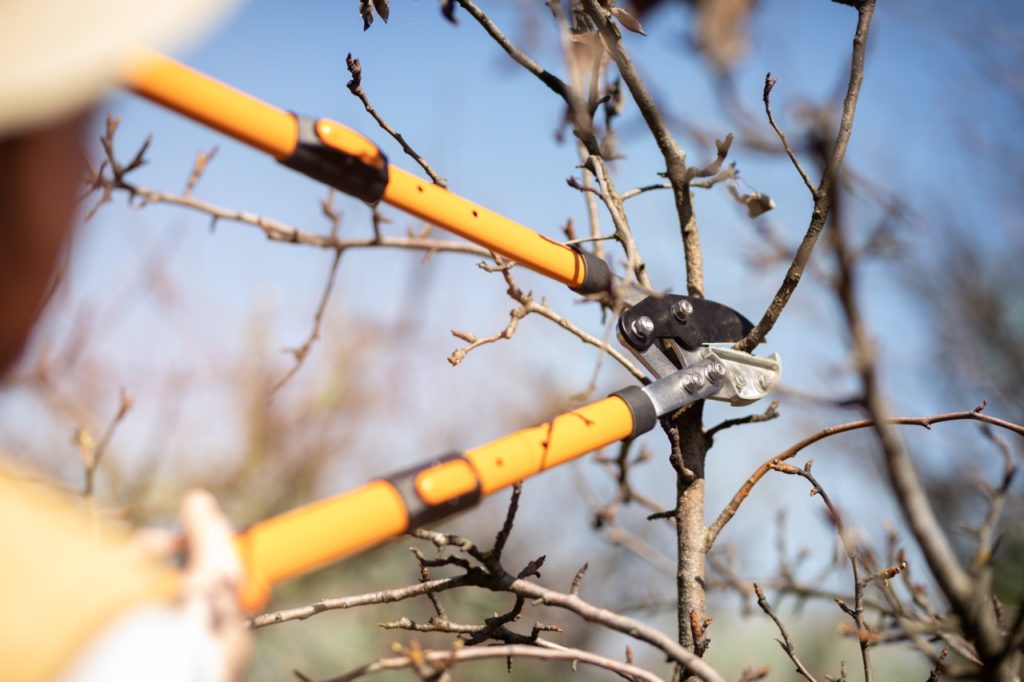
Unless you wish to train your tree into a non-standard bush form, then the process for pruning 1-2 year-old pear trees is as follows:
- In the first year, between November and March, cut back the primary stem just above a strong shoot around 75cm from the ground, making sure that there are 3-4 shoots that are evenly spaced below this point.
- Next, shorten each side branch by around half, cutting just above a bud that faces outwards.
- If there are any lower branches remaining, these can also be removed.
- In the second year, cut back the main branches by around 1/3, cutting above a healthy outwards facing bud, leaving up to 10 branches to form the permanent framework of the tree.
- Leave side branches growing from these main stems uncut, but remove any if they are crossing one another or growing towards the centre of the tree. Remove any strongly upright shoots from the top of your young pear.
Winter Maintenance
Once trees are a few years old, the most important and crucial type of pruning is general maintenance pruning.
This type of pruning is carried out every winter to make sure that there is a cycle of wood that fruits well, with older and less productive branches removed.
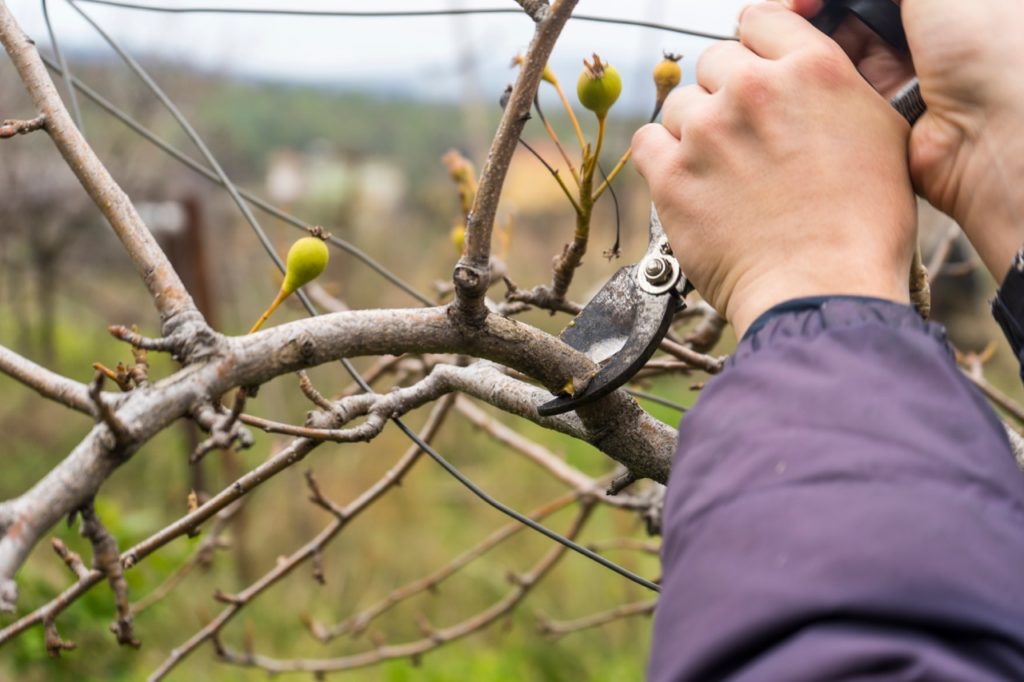
The goal is to achieve an open canopy with a framework of 5 or so main branches with an open goblet-like shape.
The process is relatively simple, but it does take a little work:
- First and foremost, check over the tree and remove any dead, damaged or diseased material, as well as any crossing branches that are rubbing on one another.
- Next, it is a good idea to cut back each of the main branches by around a third, cutting back to a bud on each to make sure the tree maintains a good shape and develops new branches and fruiting spurs. Do not prune young side shoots as these can develop fruit in the second year.
- Remove any strong shoots that are more than 15cm long and growing towards the centre of the tree.
- Thin out the spurs on the underside of branches where they won’t get as much light for fruit if the tree looks to have become congested.
Winter Pruning For Mature Trees
With the maintenance pruning described above, the tree will get a bit larger each year.
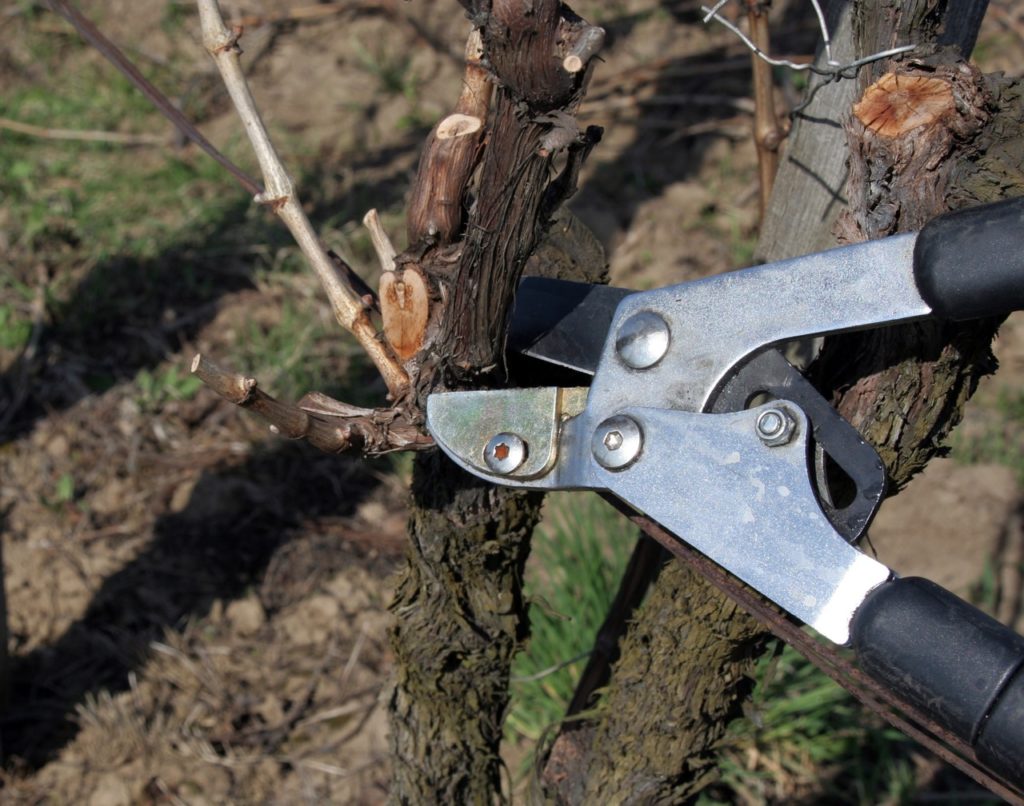
So, in addition to making sure the tree is healthy and has a good framework, you might also want to make sure that it does not get any bigger.
You can do this type of pruning once the tree is the optimum size for its rootstock.
- Using a clean, sharp pruning saw, remove all dead, damaged and diseased material and larger crossing branches.
- Aim to prune back strong branches growing at the heart of the tree to keep the canopy open, but leave smaller fruiting branches, fruiting spurs and weaker lateral growth. Don’t prune the branch leaders as they can grow more vigorously when pruned.
- Where branches are too long, these can be cut out entirely to the trunk or, ideally, to a lower, more horizontal, outward-facing branch. You should remove at least 1/3 of the thickness.
- Aim to leave at least 40-45cm between the tips of branch leaders and create an open framework with gaps that a blackbird could fly through. Always cut to a branch collar point or a side branch, leaving no stubs, and don’t remove more than 10-20% of the canopy of a pear tree in one year.
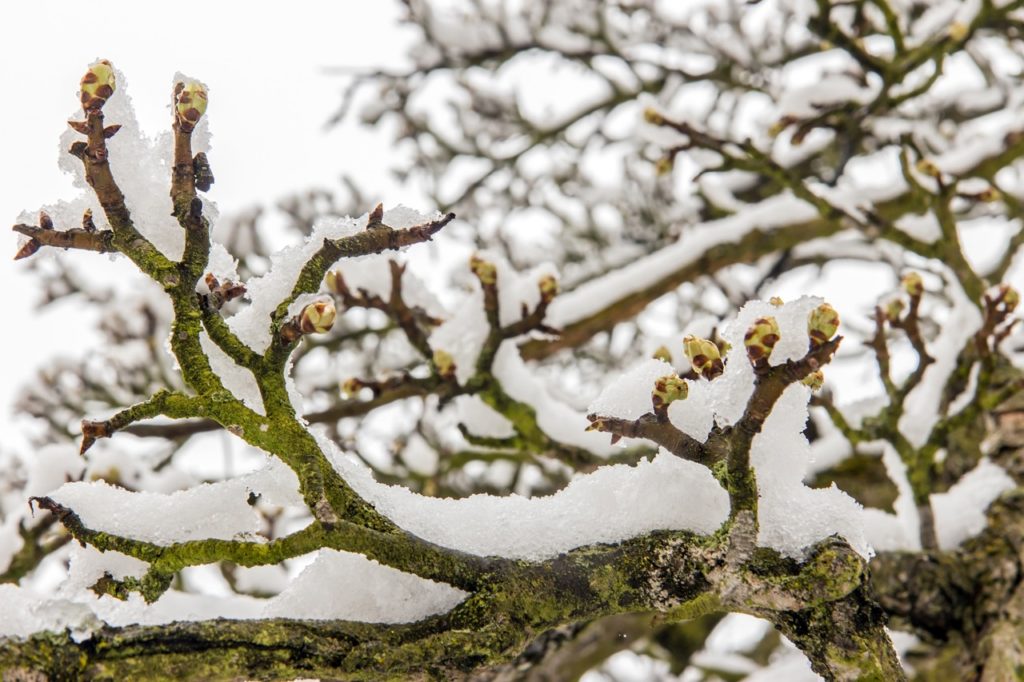
Excessive pruning can lead to the growth of many watershoots, so make sure you don’t overdo the pruning in a single year.
Summer Pruning
Some pear trees may be pruned in more specific ways to maintain a particular shape and form.
Examples of this are cordon, fan and espaliered trees.
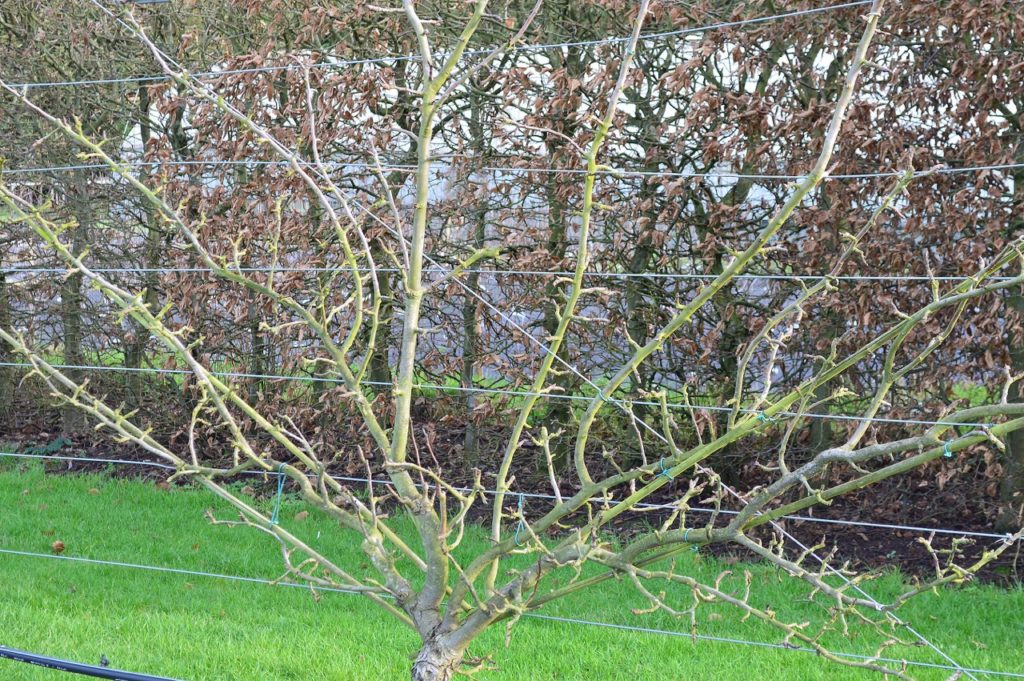
For each of these, very specific pruning is required and, in addition to maintenance pruning in winter, these trees may also require some additional pruning to restrict vigorous growth in the summer too.
Renovating An Overgrown Tree
If you have a large, overgrown and somewhat neglected pear tree on your property, it may require somewhat more drastic pruning.
Renovation is all about solving issues with an overcrowded main branch framework and taking the tree back to a healthy, open-goblet form.
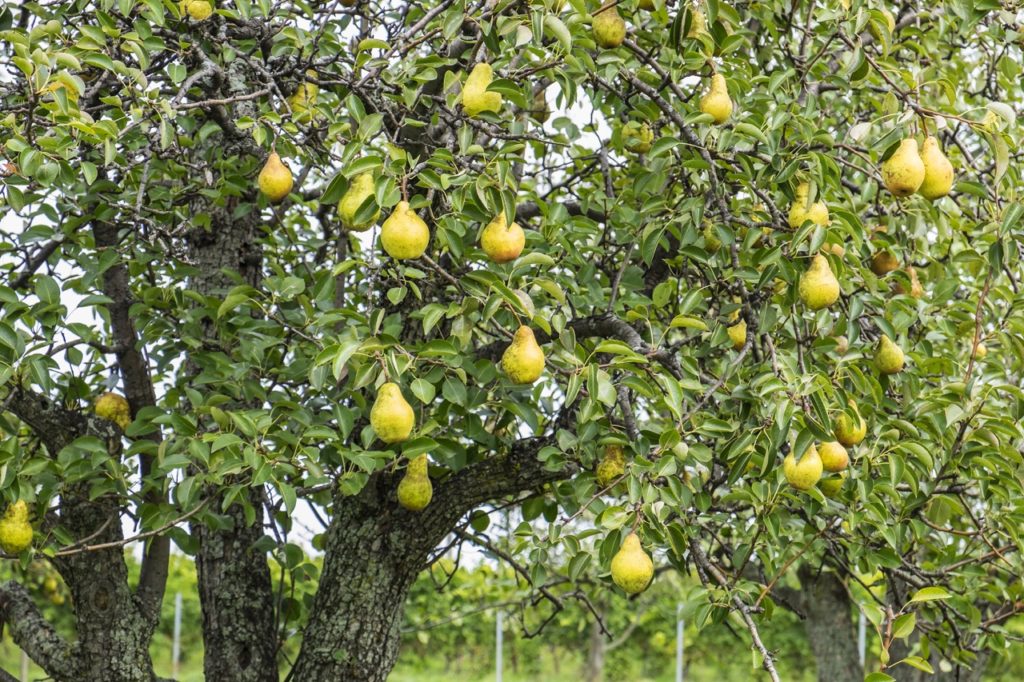
Renovation pruning is best carried out slowly over several years, or watershoots can become a problem.
Remove no more than a quarter of the canopy in a single winter and save more work, if required, for a subsequent season.
Remember, a blackbird should be able to fly between your branches.
Aim to reduce overcrowding, but on the whole, avoid removing anything more than 20cm in diameter.
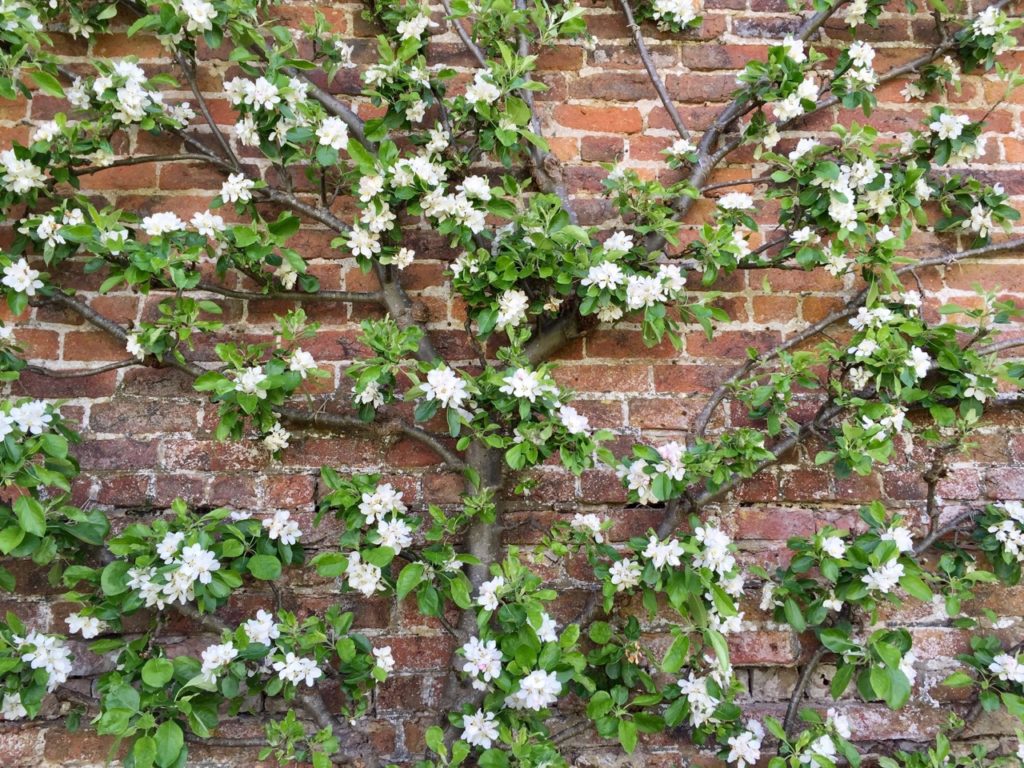
There are many intricacies to pruning pear trees, but on the whole, as long as you aim for an open, healthy framework and don’t overdo the pruning, you should not go too far wrong.
